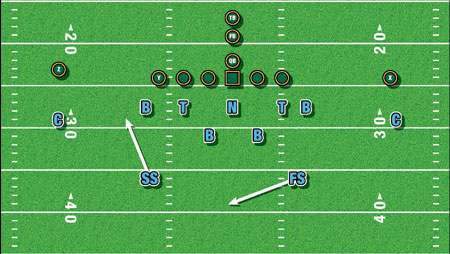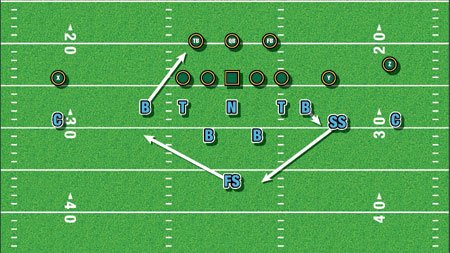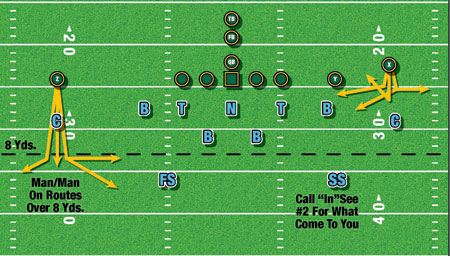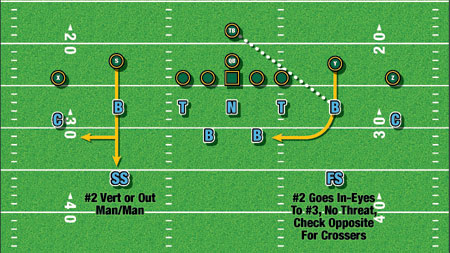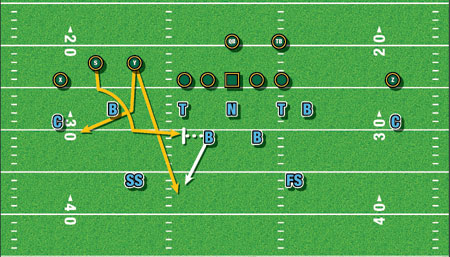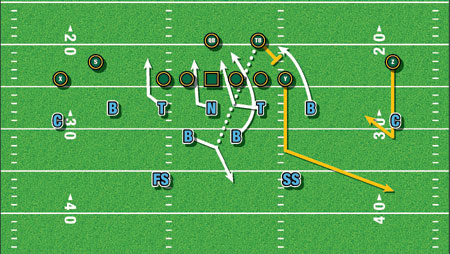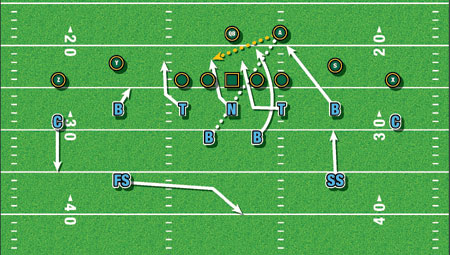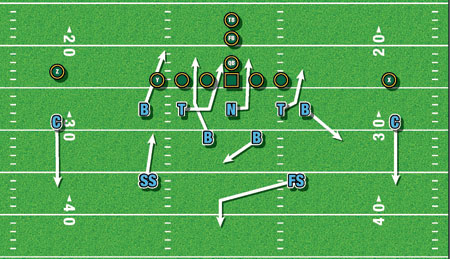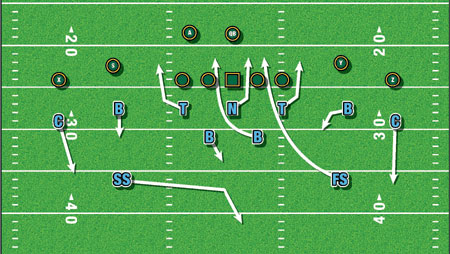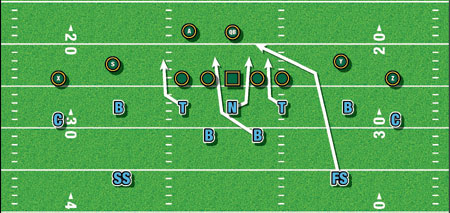Article CategoriesAFM Magazine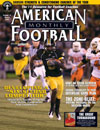
|
Zone Blitz - Putting Pressure on the Decision Makerby: Andy GuyonDefensive Coordinator, Southington High School (CT) © More from this issue As more people involve spread formations or go to the spread offense extensively, defenses need an answer to put pressure on the decision maker. The answer is to zone blitz. Man blitzing creates match up problems that the QB is looking for. If you decide to drop and cover, it will give the QB time in the pocket to pick you apart. Being able to zone blitz gives you the opportunity to put pressure on the QB while being in a safe coverage situation. The rules can be made to be as simple or as a complicated as you feel your players can handle. For us, the most important thing to do is to teach the coverage first. Once the players understand the “who” and “what” of the coverage, the blitzes can be endless. The coverage begins by always having someone in the middle of the field defending the post. By disguising the coverage at the start of the play using a 2-high safety look and moving post-snap to a 1-high safety look, you can disrupt the reads of the QB (See Diagram 1). We also like to spin the safeties, meaning that the safety that is covering down on a receiver pre-snap will bail into the post on the snap of the ball. The safety that was defending the post pre-snap will then move down to cover the #2 WR to the opposite side (See Diagram 2). The rules for the corners or whoever you have cover the #1 receiver are very simple. They play man coverage on the receiver if he runs a route deeper than eight yards. He does not cover any in breaking cuts before eight yards. He would call “IN” to the underneath droppers and look for a route coming out to him. A good technique to use with the corners is to press the receiver and play a bail technique on the snap. It gives the QB the illusion of man coverage (See Diagram 3). The technique for the player dropping off #3 is if #3 is vertical, cover him. If #3 goes out, look for #2 coming in. If #3 crosses, cover him. If #3 blocks, drop into the middle and check for crossers. In essence, the #3 dropper takes the inside route of the #2 and # 3 receivers (See Diagram 5A & 5B). The difficult technique to teach the player that drops off of #2 weak. He essentially plays man to man on #2 weak if removed. The difficult thing to teach is when #2 crosses his face he has to jump the route and stay in his hip pocket. Remember to the strength the #2 and #3 droppers are playing in and out on their receivers. The player dropping off of #2 weak needs to be much more aware of the inside breaking routes of his assignment (See Diagram 6). 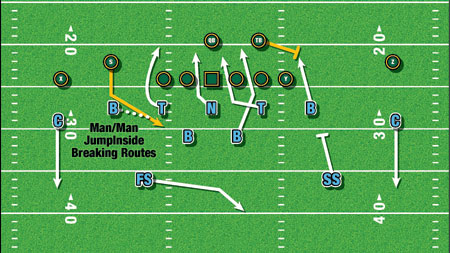
Option Responsibilities: #2 droppers are responsible for pitch. If you are in a zone blitz and they run option, the blitz needs to take care of the FB and the QB (See Diagram 7).
Screens: we assign a player to be responsible for the screen in coverage and a spy in the blitz. A defensive lineman will be responsible in the blitz and the #3 dropper helps on screens to the RB (See Diagram 8). We have some zone blitzes that we like to use in run situations. We call it Florida. We like to use states as the names of our zone blitzes to make things easier for the players. We can run this out of an odd front or our shaded front (See Diagram 9A & 9B). This blitz is good vs. the strong-side run game as well as play-action passes. We like to use this zone blitz vs. drop back pass (See Diagram 10A & 10 B). We call this zone blitz Georgia. We like to run this away from the back in the shotgun or if it is on the hash from the boundary. The beauty of this blitz is we can also bring the FS off the edge if we do not like the protection match up.
|
|
| HOME |
MAGAZINE |
SUBSCRIBE | ONLINE COLUMNISTS | COACHING VIDEOS |
Copyright 2026, AmericanFootballMonthly.com
All Rights Reserved


